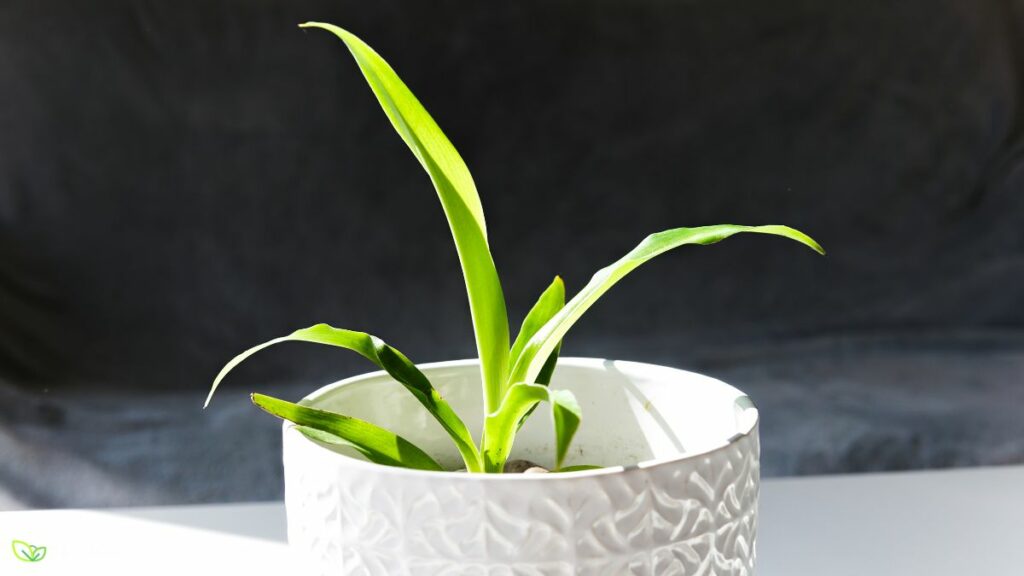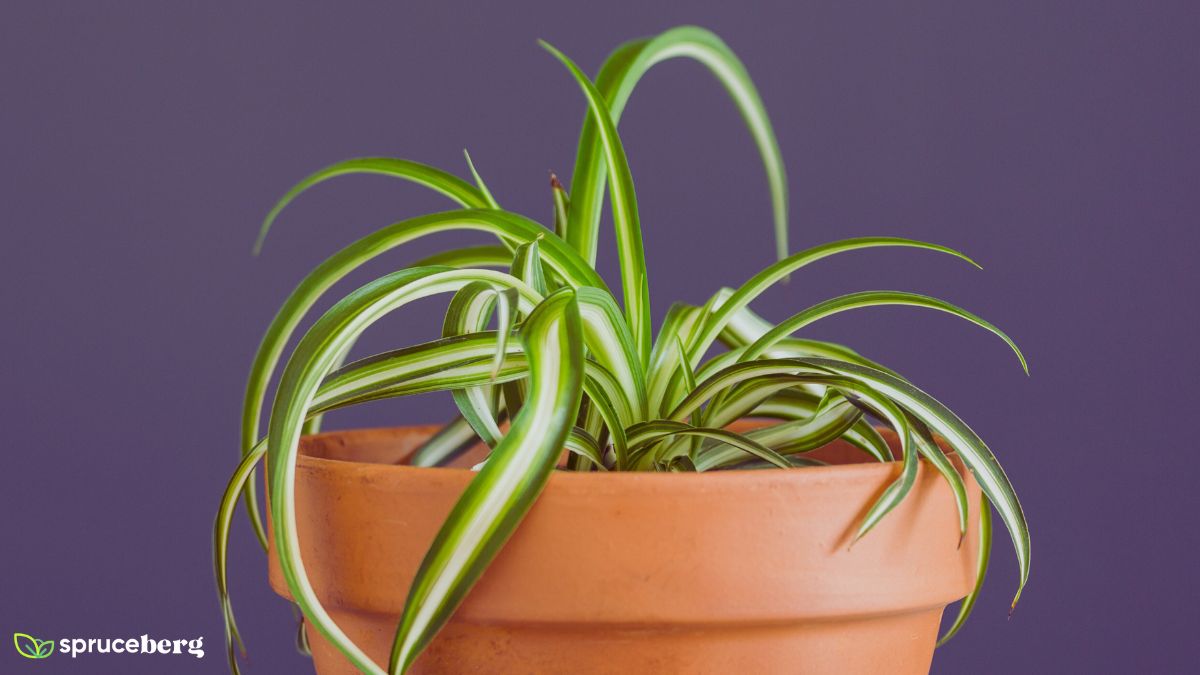If you’re a plant enthusiast or a beginner looking to add a touch of unique elegance to your indoor space, you’re in for a treat! With its captivating curly leaves and easy-to-maintain nature, the Bonnie Curly Spider Plant has gained popularity among plant lovers.
In this comprehensive guide, we will delve into all the essential information you need to know about caring for and growing the Bonnie Curly Spider Plant.
Whether you’re a seasoned plant parent or just starting your green journey, this article will provide valuable insights, tips, and techniques to ensure the successful growth and well-being of your Bonnie Curly Spider Plant.
We’ll cover a range of topics, including the plant’s characteristics, ideal growing conditions, watering and fertilizing requirements, propagation methods, and common challenges you may encounter.
By the end, you’ll be equipped with the knowledge and confidence to nurture your Bonnie Curly Spider Plant into a thriving, stunning specimen.
Chlorophytum comosum ‘Bonnie’ – A Quick Glance
| Feature | Information |
|---|---|
| Common name | Curly Spider Plant |
| Scientific name | Chlorophytum comosum ‘Bonnie’ |
| Origin | South Africa |
| Light requirements | Bright, indirect light |
| Watering needs | Water when the top inch of soil is dry |
| Temperature range | 65-85°F (18-29°C) |
| Humidity level | 50-60% |
| Soil type | Well-draining potting mix |
| Fertilization | Feed once a month during the growing season |
| Pests and diseases | Spider mites, mealybugs, root rot |
| Toxicity | Mildly toxic to pets |
| Propagation | Propagate by division or by plantlets |
| Lifespan | 10-20 years |
Find more about all the different types of spider plants here.
Bonnie Curly Spider Plant Benefits
Air Purification
Curly spider plants, including the Bonnie Curly Spider Plant, are renowned for their air-purifying qualities. They can effectively remove harmful toxins like formaldehyde and xylene from the air, helping to improve indoor air quality.
Improved Indoor Air Quality
By absorbing carbon dioxide and releasing oxygen through photosynthesis, curly spider plants contribute to better indoor air quality. Their presence can be particularly beneficial in spaces with limited ventilation or higher levels of indoor pollutants.
Stress Reduction
Having curly spider plants in your living or working space can help reduce stress levels. The presence of greenery and the act of caring for plants have been shown to promote relaxation and create a more calming atmosphere.
Natural Humidification
Curly spider plants, like other varieties, release moisture into the air through transpiration. This natural humidification can help combat dry indoor air, especially in environments with low humidity levels.
Easy Maintenance
Curly spider plants, including the Bonnie Curly Spider Plant, are known for their low-maintenance nature. They can adapt to various light conditions and tolerate infrequent watering, making them suitable for both experienced gardeners and beginners.
Decorative Appeal
The unique curly leaves of spider plant cultivars, such as the Bonnie Curly Spider Plant, add an attractive and eye-catching element to any indoor space. Their cascading growth habit makes them ideal for hanging baskets or placing on shelves and countertops.
Propagation and Sharing
Curly spider plants are prolific growers and readily produce plantlets that can be propagated and shared. This allows you to spread the joy of gardening and gift new plants to friends and family.
Remember that while curly spider plants offer these benefits, individual experiences may vary. It’s important to consider specific environmental conditions and care requirements to maximize the advantages these plants can bring to your space.
Bonnie Curly Spider Plant Care

Bonnie Curly Spider Plants are a popular houseplant because they are easy to care for and they have beautiful, curly leaves. This blog post will provide you with some tips on how to care for your Bonnie Curly Spider Plant so that it can thrive for many years to come.
Light Requirements
Bonnie Curly Spider Plants prefer bright, indirect light. Too much direct sunlight can scorch the leaves. If you live in a sunny area, you may need to place your plant in a spot that gets filtered sunlight, such as behind a sheer curtain.
Adequate lighting helps spider plants to grow bushier.
Watering Needs
Water your Bonnie Curly Spider Plant when the top inch of soil is dry. Overwatering is the most common cause of death for these plants. Allow the soil to dry out completely between waterings.
Temperature and Humidity Requirements
Bonnie Curly Spider Plants prefer temperatures between 65 and 85 degrees Fahrenheit. They can tolerate a bit of cooler temperatures, but they will not do well in cold drafts. These plants also prefer a humidity level of 50-60%. If the air in your home is dry, you can help to increase the humidity by placing your plant on a pebble tray or by misting the leaves regularly.
Soil Requirements
Bonnie Curly Spider Plants prefer a well-draining potting mix. A good potting mix for these plants will contain peat moss, perlite, and vermiculite.
Fertilization
Fertilize your Bonnie Curly Spider Plant once a month during the growing season (spring and summer) with a balanced liquid fertilizer.
Pests and Diseases
Bonnie Curly Spider Plants are relatively pest- and disease-free. However, they can be susceptible to spider mites, mealybugs, and root rot. If you notice any pests or diseases, isolate your plant and treat it with an appropriate insecticide or fungicide.
Toxicity
Bonnie Curly Spider Plants are mildly toxic to pets. If your pet ingests any part of the plant, it may experience vomiting, diarrhea, or other symptoms. If you think your pet has ingested a Bonnie Curly Spider Plant, contact your veterinarian immediately.
Propagation
Bonnie Curly Spider Plants can be propagated by division or by plantlets. To propagate by division, simply divide the plant into two or more sections and replant each section in a new pot. To propagate by plantlets, allow the plantlets to grow until they are about 2 inches long. Then, carefully remove them from the mother plant and replant them in a new pot.
With proper care, your Bonnie Curly Spider Plant will thrive for many years to come. By following the tips in this blog post, you can help ensure that your plant gets the light, water, nutrients, and humidity it needs to stay healthy and beautiful.
Here are some additional tips for caring for your Bonnie Curly Spider Plant:
- Repotting: Bonnie Curly Spider Plants will need to be repotted every 2-3 years, or when they outgrow their current pot. When repotting, use a pot that is only one size larger than the current pot.
- Pruning: Bonnie Curly Spider Plants can be pruned to keep them tidy and to encourage new growth. To prune, simply trim off any dead, damaged, or unhealthy leaves.
- Pests and diseases: Bonnie Curly Spider Plants are relatively pest- and disease-free, but they can be susceptible to spider mites, mealybugs, and root rot. If you notice any pests or diseases, isolate your plant and treat it with an appropriate insecticide or fungicide.
How To Propagate Curly Spider Plants (Chlorophytum Comosum)

Propagating curly spider plants (Chlorophytum comosum) is relatively easy and rewarding. They produce plantlets or offsets that can be separated from the parent plant and grown into new individual plants. Here’s a step-by-step guide on how to propagate curly spider plants:
- Look for plantlets: Spider plants naturally produce small plantlets that grow from long stems known as runners. These plantlets have their own roots and can be easily propagated.
- Prepare pots or containers: Get small pots or containers ready for planting the plantlets. Make sure each pot has drainage holes to prevent waterlogging.
- Choose healthy plantlets: Select plantlets that have well-developed roots and are at least a few inches in length. They should be able to sustain themselves when potted separately.
- Separate the plantlets: Gently separate the chosen plantlets from the parent plant. You can use clean scissors or your hands to carefully detach them from the runners.
- Plant the plantlets: Fill the prepared pots with a well-draining potting mix. Create a small hole in the soil and place the plantlet in it. Cover the roots with soil and gently press down to secure the plantlet in place.
- Water the newly potted plantlets: Give the plantlets a thorough watering, ensuring the soil is evenly moist. Avoid overwatering, as excessive moisture can lead to root rot.
- Provide proper care: Place the newly potted plantlets in a location with bright, indirect light. Maintain moderate watering, allowing the soil to dry slightly between waterings. Provide a suitable temperature range of 60-75°F (15-24°C) for their growth.
- Monitor and adjust: Keep an eye on the plantlets and make any necessary adjustments to their care. As they establish themselves, they will begin to grow and develop into independent plants.
Propagation can also be done by dividing mature spider plants, where the roots and foliage are divided into separate plants. This method is suitable for larger plants with multiple clumps of growth.
When And How Often To Water Spider Plant
Watering the Bonnie Curly Spider Plant (Chlorophytum comosum ‘Bonnie’) correctly is crucial for its health and well-being. Here are some guidelines to follow:
Moderate watering: Aim for moderate watering rather than keeping the soil constantly wet or allowing it to become bone dry. Overwatering can lead to root rot, while underwatering can cause the plant to suffer and wilt.
Soil moisture: Before watering, check the moisture level of the soil by inserting your finger about an inch deep. If the top inch of soil feels dry to the touch, it’s generally a good time to water the plant.
Watering frequency: Water your Bonnie Curly Spider Plant when the top inch of soil has dried out. The frequency may vary depending on factors such as temperature, humidity, and the pot’s drainage capabilities. Typically, watering once every 7-10 days is a good starting point, but adjust based on your plant’s needs.
Water quantity: When watering, thoroughly saturate the soil until water starts to drain out from the bottom of the pot. This ensures that the roots receive sufficient moisture without waterlogging the soil.
Drainage: Proper drainage is essential to prevent water from accumulating at the bottom of the pot, which can lead to root rot. Ensure that your plant is potted in a container with drainage holes, allowing excess water to escape.
Adjust for environment: Consider adjusting your watering routine based on environmental conditions. For example, during hot summer months, your plant may require more frequent watering, while in cooler seasons or with lower humidity, you might need to reduce watering frequency.
Observation is key: Pay attention to your plant’s response to watering. If the leaves start turning yellow or drooping, it could be a sign of overwatering. Conversely, if the leaves become wilted and dry, it may indicate underwatering. Adjust your watering practices accordingly.
Also, read about the Hawaiian spider plant.
Wrap Up
The Bonnie Curly Spider Plant (Chlorophytum comosum ‘Bonnie’) is a low-maintenance houseplant that adds a touch of elegance to any indoor space. With its curly, arching leaves and variegated coloring, it is both visually stunning and versatile in its decorative appeal.
Taking care of the Bonnie Curly Spider Plant is relatively easy, making it suitable for both experienced plant enthusiasts and beginners.
Providing it with bright, indirect light, moderate watering, and a well-draining potting mix will help it thrive.
Additionally, maintaining a moderate level of humidity and avoiding extreme temperature fluctuations will contribute to its overall health and growth.
The Bonnie Curly Spider Plant offers not only aesthetic beauty but also functional benefits. It is known for its air-purifying qualities, helping to improve indoor air quality by removing harmful toxins.
Its natural humidification properties can combat dry air, and the act of nurturing and caring for the plant has been shown to reduce stress levels.
Enjoy the journey of caring for your Bonnie Curly Spider Plant and the joy it brings to your living space. Happy gardening!

Leave a Reply